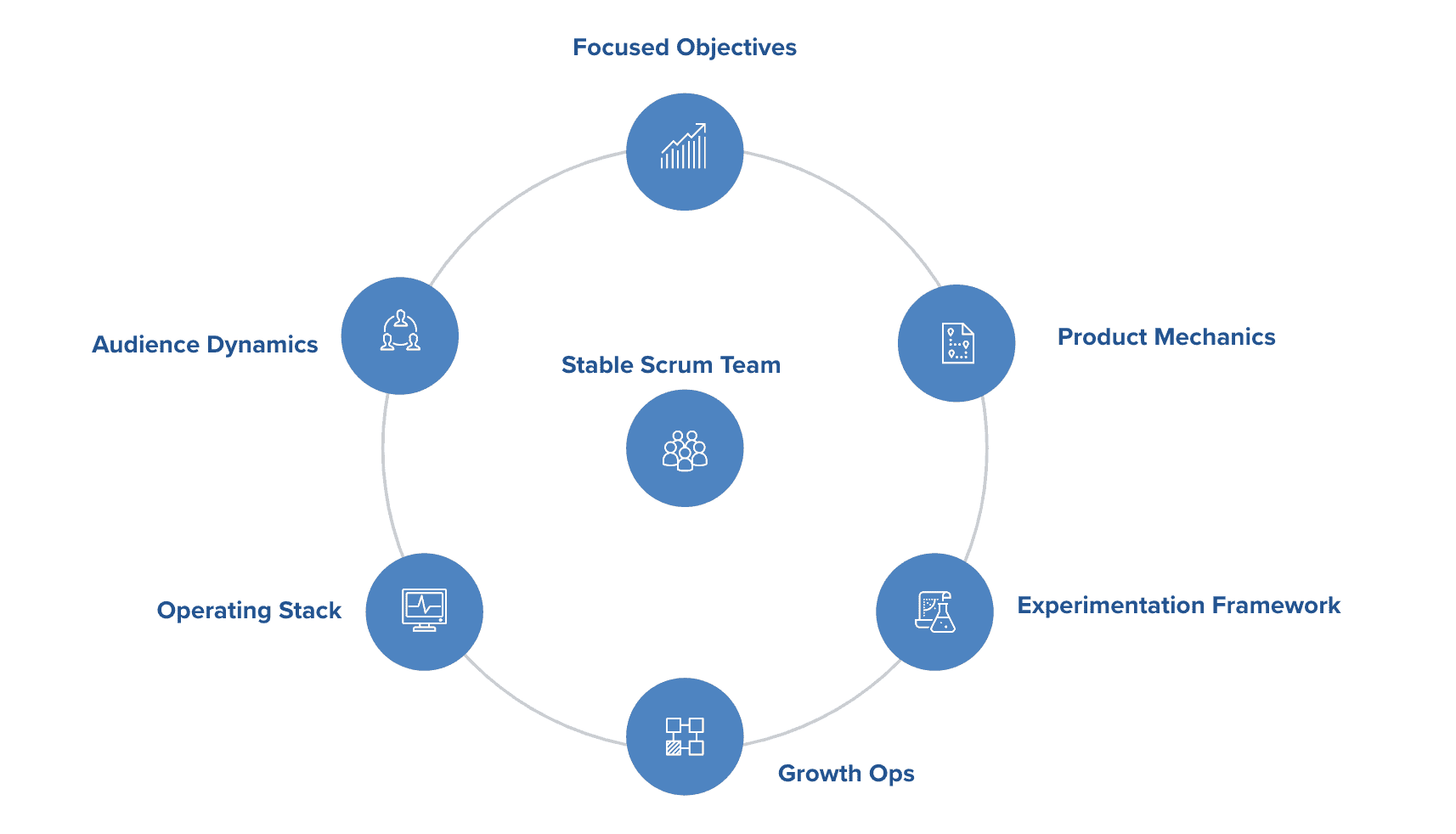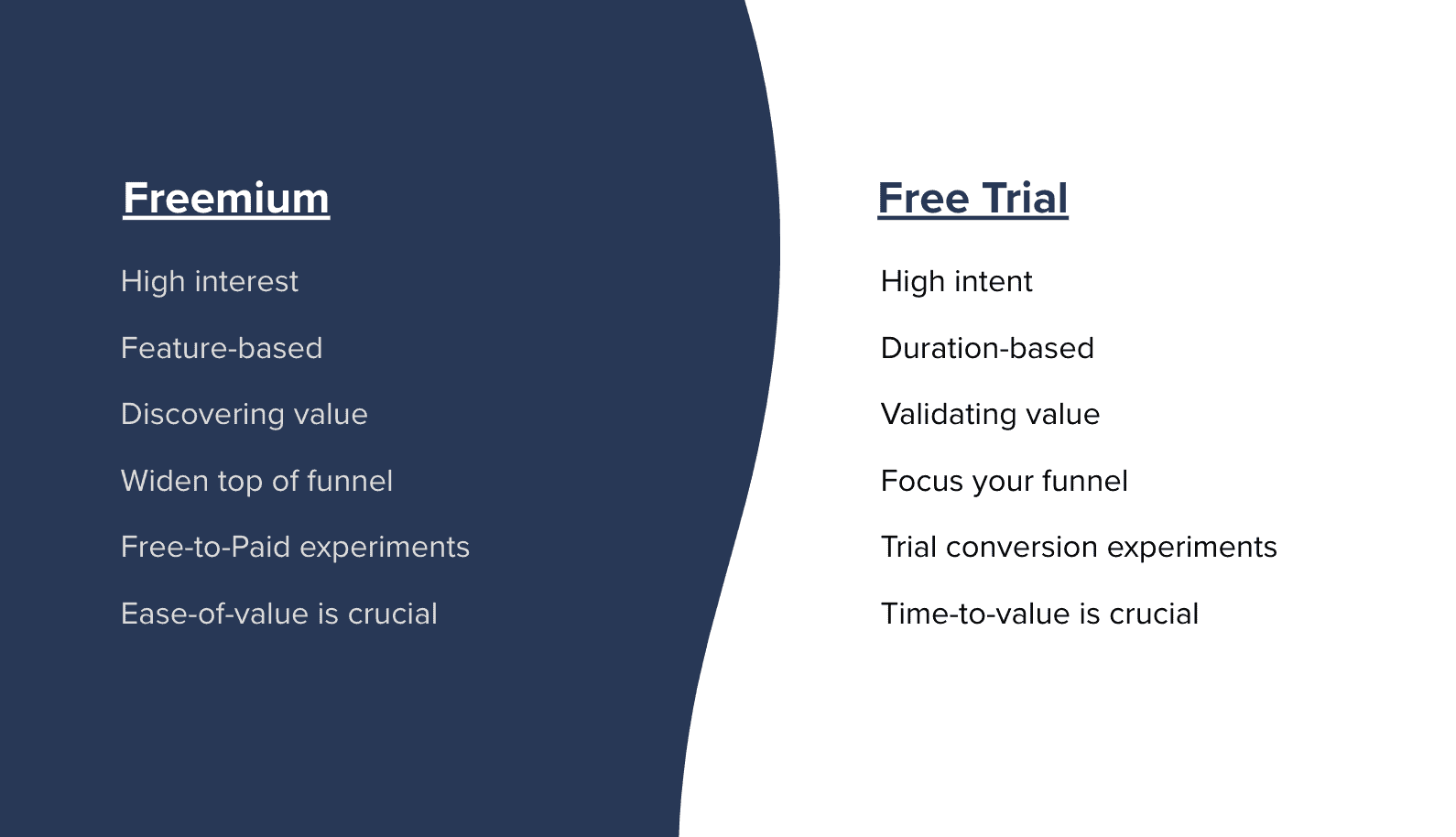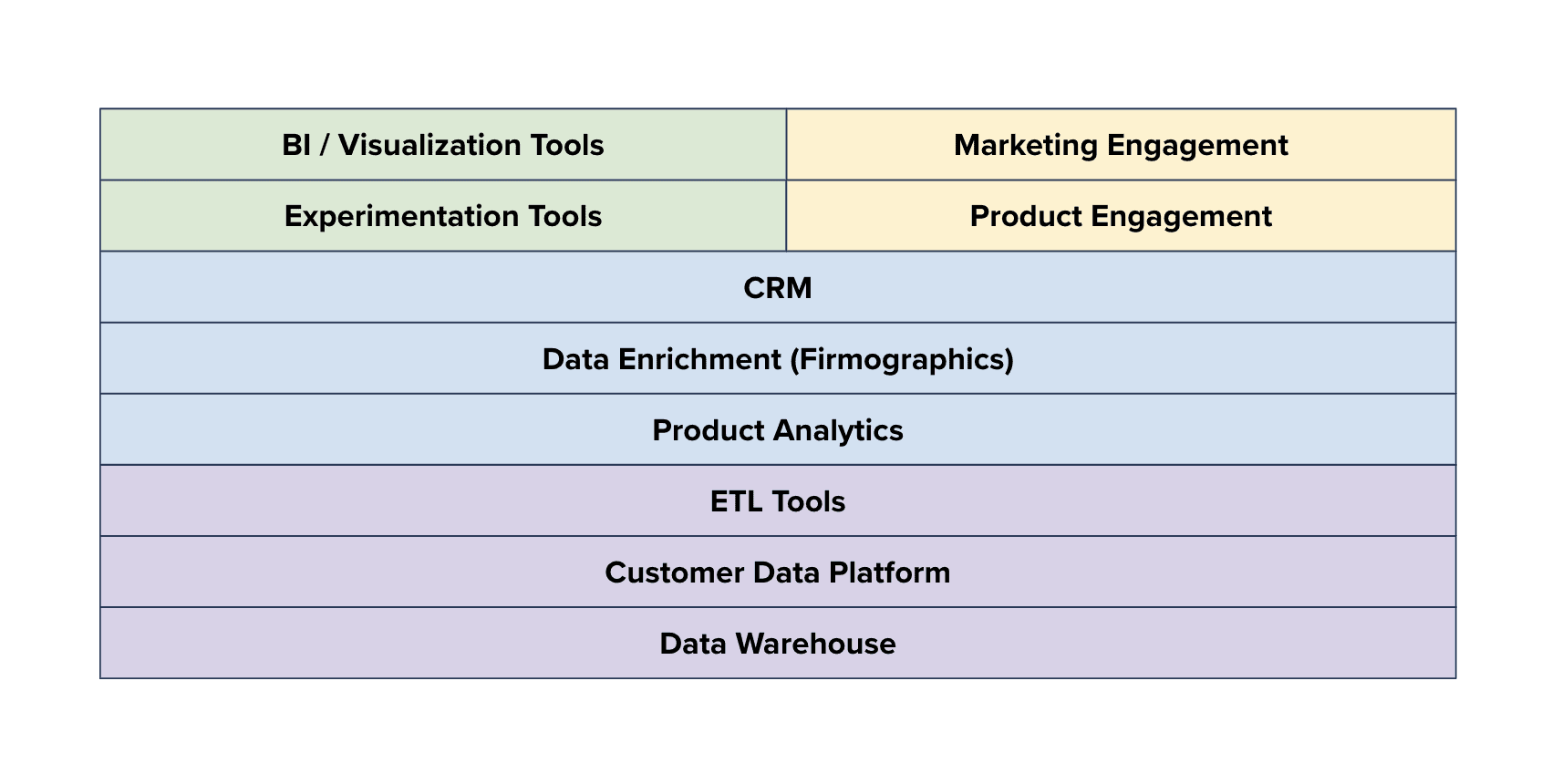Harsh Jawharkar is a growth leader and executive advisor who partners with investors, founders, and CXOs to shape and accelerate growth across all stages. In this article, he offers entrepreneurs a guide to product-led growth.
In the first article on this topic, “Product-led Growth: What Startup Founders Need to Know,” I discussed what PLG is and how entrepreneurs can determine if it’s right for their B2B SaaS startups. In this article, I detail the steps for implementing PLG strategies.
Before you begin
PLG, like any other go-to-market approach, is a means to an end. It serves the higher purpose of business growth and profitability. Implementing PLG just for the sake of it – without analyzing the best overall GTM motion for your specific product-market permutation – can be counterproductive. Every company needs to analyze the dynamics of its addressable market, the product/solution it offers to address the market opportunity, incumbent buyer personas and behaviors, and the evaluation/adoption journey in order to determine the best GTM approach.
If you are uncertain if PLG is a fit for you, review the first article in this series, or engage a consultant who specializes in PLG.
Build a PLG Operating System
The most successful PLG-driven companies build enduring PLG systems, which they can iterate, improve, and scale to fit their growth over time. This involves taking a holistic view across multiple components that together create an effective and efficient PLG motion. Here are the main components:
- Focused objectives
- Audience dynamics
- Product mechanics
- Experimentation framework
- Operating stack
- Growth ops
- PLG scrum team
The figure below shows how they work together within a system.

The following sections explain how each component contributes to a PLG system.
1. Focused Objectives
PLG fails when it’s randomly applied across every generic growth objective. At every stage, a growing company will identify and prioritize the objectives they must achieve – to first survive and then thrive. Without a clear understanding of priority objectives, PLG is an ineffective tool.
Start by applying a first-principles approach to ruthlessly prioritize what you’re trying to solve for and why it matters. Being hypothesis-driven means that proving and disproving are equally beneficial outcomes.
Articulate specific measurable outcomes and rank-order them across your flow:
- customer acquisition (trial or free signup)
- monetization (free/trial-to-paid conversion)
- cross-flow expansion
- upsell/upgrade
- cross-sell (for multi-product businesses)

These are not binary choices, but you will learn a lot about your priorities by playing the $10 dollar game: If you had to allocate $10 worth of “priority” across these stages of your flow, how would you do it? And spending $2 on each stage is not an option!
2. Audience Dynamics
To design the right buyer and adoption journey for product-led growth, you need a clear picture of the key “actors” in your flow. Clearly describe and differentiate among buyers, users, and administrators. Whether your motion is single-player or multiplayer, these roles can be assumed by fundamentally different people.

Each actor will play their part in growth, and you will need to understand their persona (triggers, needs, FUD, etc.) to design suitable hypotheses and growth experiments.
3. Product Mechanics
Closely study and catalog the mechanics within every aspect of your product (including pricing and packaging) to identify specific areas that are conducive for customer nudges and viral loops. For instance, does your product use a freemium or trial model? Both offerings serve similar objectives: avoiding the “cold start” challenge, where a user launches the product, experiences a blank canvas, gets paralyzed before experiencing the full potential of the product, and eventually abandons the trial.
Digging into their respective product mechanics reveals nuances that could indicate whether one is a better fit for your business than the other.
Free Trial vs. Freemium
In highly saturated categories with multiple competitors, buyers mostly know the market’s problems and what the potential solutions are. In this case, a free (time-based) trial makes sense because the potential buyer has done their research and just needs to quickly evaluate if your product fits the bill (i.e., they are arriving at your website with intent). They want to experience the full power of your product, albeit for a limited amount of time, so that they can make the right decision. Their objective is to validate their assumptions about your product.
In emerging categories with different types of solutions trying to solve a particular problem, buyers will have interest but won’t quite know if you’re right for them. It’ll take longer to convert their interest into intent. In this situation, it’s fruitful to be patient with your users by providing a freemium option. In this scenario, the buyer will evaluate a subset of features to see if they begin to address their needs.
Because this category is still emerging, some buyers likely won’t be a good fit. Make it easy for them to quickly understand how your product solves their problem without pressuring them with a time-based trial. This allows you to widen the funnel and maximize the number of potential buyers/users.

To thoroughly document your product mechanics, start by deconstructing the entire user journey into a series of micro-tasks (or jobs to be done) that map across the journey.
For example, the Slack user journey broke down like this:
- Signup welcome for the initiator
- Nurture in-product and via email to motivate the team initiator to invite at least three other teammates
- Provide in-product education for the initiator and their teammates
- Motivate the team to set up the right Slack channels for conversations
- Motivate the team to install the primary Slack integrations (e.g., GSuite, Dropbox, etc.)
- Motivate the team to insert or upload at least three documents per person over N days
- Motivate the team to exchange at least X number of messages within N days
- Provide the initiator with an admin email weekly (and monthly)
- And so on…
While not exhaustive, the above example unpacks user onboarding into much smaller steps. And in each step, you can determine the best methods (e.g., in-product messaging or cues, email, bots, or even humans) to chain together successful actions. By solving each micro-step on behalf of the user, you can create a successful path through onboarding into activation, usage, and ultimately, engagement and expansion.
4. Experimentation Framework
Ask your team to treat growth like a product and encourage experimentation within the steps of your identified product mechanics to help increase your PLG conversion. Offer a disciplined set of methods to design, organize, and prioritize experiments in a structured way. There are plenty of structured prioritization methods – ranging from RICE to KANO, MoSCoW and story mapping – that can be applied by growth teams.
For example, the RICE method uses four variables to create a score that you can use to prioritize growth experiments:
- Reach – Start by estimating the size of the user base that the experiment will reach. That is, how many potential users will be exposed to this change (in messaging, pricing, packaging, or a user flow)?
- Impact – Next, use a simple scoring mechanism (e.g., 1 – 5) to estimate how much this experiment will change the metric you’re trying to affect. For example, if you’re trying to move the needle on a conversion rate, what is the estimated impact of this experiment?
- Confidence – Use a 0 – 100% scale to estimate your confidence level in achieving the impact you’ve determined. Your hypothesis will likely have gaps and you will be working with incomplete data. The confidence score helps you balance between optimism and pessimism.
- Effort – Finally, estimate the amount of work that needs to be done to implement this change. This can usually be measured by your engineering team in person-weeks or person-months.
You can start by scoring and ranking each of your ideas or experiments. These can then be evaluated by your teams and scheduled for implementation in a particular agile sprint backlog. But as you start becoming more sophisticated, you can start mapping these ideas by comparing reach vs impact or impact vs effort (for example). In environments where you have lots of viable ideas in the backlog, this further comparison will help you sequence which ones to implement sooner than later.

By running quantitative experiments, all internal stakeholders can get an objective view of what may (or may not) work. Doing this will avoid subjective debates, create alignment, and also help you make decisions with a clear view of the risks and tradeoffs.
5. Operating Stack
You can’t grow what you don’t measure. Spend time upfront aligning on the right KPIs and then create consistent analytical views for measuring progress. Doing so has a few benefits:
- More time learning, less time rebuilding infrastructure
- Common success metrics everyone can trust with less debate on whose interpretation of the KPIs matters more
- Flexibility to spin up new experiments as your markets and audience change
- Speed of going from hypothesis to test without having to reconfigure systems and rebuild data models
By mapping out the stack and implementing a strong foundation for measurement, you can focus on the outcomes and methods to drive your growth.
Here’s an example of a complete operating tech stack for PLG.

6. Growth Ops
PLG can and should feed your entire company’s progress and velocity; it may be product-led but it needs to be a whole-company effort. A product-qualified lead (PQL) is when a user that fits your ideal customer profile takes a set of actions that signal that they’re ready to buy your product. This is where you need functions across the business working together like an operating system to drive growth in a seamless and efficient way. This operating system is similar to a router, ensuring that the right lead gets the right type of attention and nurture from multiple teams within your company – from product and marketing to sales and customer success.
Think of growth ops as this operating system: business processes and service-level agreements between GTM teams so that PQLs flow through smoothly.
When a PQL threshold is reached for a particular user, here are a few examples of the triggers and actions you could orchestrate for each team:
- Product – In-product messaging can be triggered and docs/education can be surfaced to start the conversion process of the PQL
- Marketing – Nurture campaigns can be activated via email and other channels (e.g., webinars, events, etc.) to help move customers in the PQL state closer to purchase
- Sales – By layering on firmographics (size of company, vertical, etc.), you can route the PQL to the appropriate sales team, giving you the opportunity to tailor the next steps for that customer based on whether they fall into the enterprise or mid-market/sales-assist category
- Customer success – In scenarios where PQLs are related to expansion (e.g., a new instance or new team using the product from the same customer), PQLs can be routed to customer success so that they can follow up as part of their routine as well

7. PLG Scrum Team
Ultimately, growth is driven by the right mix of people with the right skills and competencies to ensure that the PLG system is much bigger than the sum of its parts. This team will build, iterate, and operate your growth engine in a self-sustaining way, with purpose and clarity.
It’s tempting to “borrow” talented team members from across your organization and make PLG a side gig for them. Avoid this as much as possible. Make this their full-time objective so that they don’t get stretched too thin or frequently context-switch and lose focus.
When all these components are implemented together, your company will have a holistic PLG system that will scale as your company grows.
About the author
Harsh Jawharkar is a growth leader and executive advisor, partnering with investors, founders, and CXOs to shape and accelerate growth across all stages. Harsh has built and scaled a diverse array of marketing organizations to drive growth at category-defining SaaS companies like Atlassian, Slack, Narvar, and Zendesk. Harsh began his career in product development, combining his background in engineering and design to ship large-scale cloud products at companies like PayPal and Sapient.


